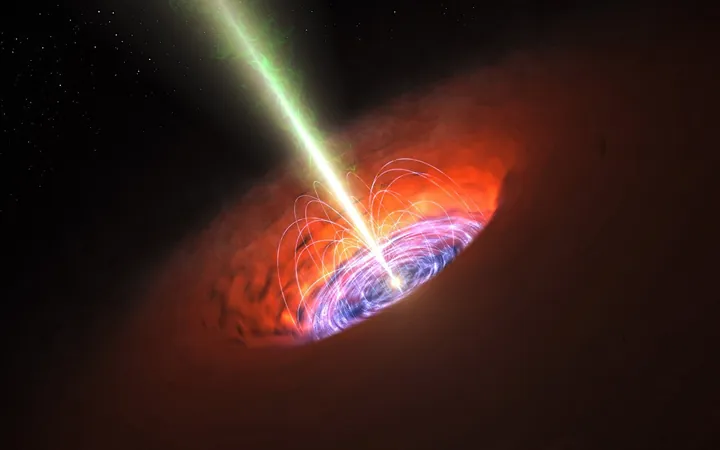
Excitement Brews at University of Manitoba as NASA Chooses AXIS for Revolutionary X-ray Mission!
2024-11-07
Author: Jacques
Excitement Brews at University of Manitoba as NASA Chooses AXIS for Revolutionary X-ray Mission!
November 7, 2024 — NASA has officially unveiled its selection for the groundbreaking "Probe" mission, dedicating a staggering $1 billion to push the boundaries of high-energy astrophysics in the coming decade. Among the two competing missions—one aimed at exploring infrared light and the other focusing on X-ray light—the latter has emerged victorious with the Advanced X-ray Imaging Satellite, or AXIS. Dr. Chris Reynolds from the University of Maryland leads this ambitious project that promises to illuminate some of the universe's most elusive secrets!
In an era where understanding cosmic events has never been more crucial, AXIS is expected to take a deep dive into phenomena such as supernova explosions, which have far-reaching impacts on galaxy growth and composition. The mission will shed light on mysteries surrounding black holes and our cosmic origins, addressing some of the most enigmatic questions in high-energy astrophysics.
The AXIS team includes prominent figures like Dr. Samar Safi-Harb, a Canada Research Chair in extreme astrophysics at the University of Manitoba, who oversees the Compact Objects-Supernova Remnants working group. She plays a pivotal role as a co-investigator on this mission, supported by bright minds such as Dr. Tyrone Woods, who specializes in black holes, and Dr. Gilles Ferrand, noted for his expertise in computational simulations. This team, which includes various students and postdoctoral researchers, is set to break new ground in the study of X-ray astronomy.
AXIS aims to provide an unprecedented look at the X-ray universe, promising not only to enhance resolution but also to boost sensitivity by a factor of ten compared to previous missions like the Chandra X-ray Observatory. It will build upon the successes of NASA’s Neil Gehrels Swift Observatory, enabling researchers to study transient X-ray events that could reshape our understanding of astrophysical phenomena.
With its advanced technology—including lightweight segmented optics and efficient CCD detectors—AXIS is poised to greatly influence multiple ongoing and planned missions, making it a key player in the exploration of the universe. It will work in conjunction with the Cosmological Advanced Survey Telescope for Optical and Ultraviolet Research (CASTOR), a flagship mission from Canada, generating multifaceted insights through multi-wavelength studies.
Dr. Safi-Harb shared her enthusiasm regarding AXIS's selection, stating that this mission will not only enhance our grasp of high-angular resolution astrophysical studies but also serve as a breeding ground for the next generation of astrophysicists. “AXIS will enable extraordinary discoveries through both focused observations and expansive surveys, potentially revealing millions of new cosmic sources. The data generated will require innovative analytical methods, including cutting-edge machine learning techniques,” she noted.
As we prepare for AXIS's launch, the potential for discovering new cosmic phenomena is monumental. Future generations of data scientists and astronomers will emerge from this venture, adding to our collective quest for understanding the universe. Buckle up, because AXIS is set to take us on an exhilarating journey through the X-ray cosmos!









 Brasil (PT)
Brasil (PT)
 Canada (EN)
Canada (EN)
 Chile (ES)
Chile (ES)
 España (ES)
España (ES)
 France (FR)
France (FR)
 Hong Kong (EN)
Hong Kong (EN)
 Italia (IT)
Italia (IT)
 日本 (JA)
日本 (JA)
 Magyarország (HU)
Magyarország (HU)
 Norge (NO)
Norge (NO)
 Polska (PL)
Polska (PL)
 Schweiz (DE)
Schweiz (DE)
 Singapore (EN)
Singapore (EN)
 Sverige (SV)
Sverige (SV)
 Suomi (FI)
Suomi (FI)
 Türkiye (TR)
Türkiye (TR)